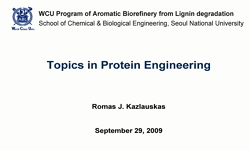본 연구는 한국의 소득불평등과 탄소불평등 간의 상호관계를 실증적으로 분석하였다. 이를 위해 2000년부터 2019년까지 16개 광역시도의 시계열 데이터를 활용하여, 소득불평등과 탄소불평등...
http://chineseinput.net/에서 pinyin(병음)방식으로 중국어를 변환할 수 있습니다.
변환된 중국어를 복사하여 사용하시면 됩니다.
- 中文 을 입력하시려면 zhongwen을 입력하시고 space를누르시면됩니다.
- 北京 을 입력하시려면 beijing을 입력하시고 space를 누르시면 됩니다.

한국의 소득불평등과 탄소불평등의 관계 분석 = Analysis of the Relationship between Income Inequality and Carbon Inequality in Korea
한글로보기부가정보
국문 초록 (Abstract)
본 연구는 한국의 소득불평등과 탄소불평등 간의 상호관계를 실증적으로 분석하였다. 이를 위해 2000년부터 2019년까지 16개 광역시도의 시계열 데이터를 활용하여, 소득불평등과 탄소불평등에 대한 타일(Theil) 지수를 산출하였다. 분석 방법으로는 통상최소자승법(ordinary least squares, OLS), Granger 인과성 검정, 충격반응함수(impulse response function, IRF)를 적용하여 소득불평등과 탄소불평등 간의 양방향적 인과관계오 동태적 반응 구조를 살펴보았다. 분석 결과는 다음과 같다. 첫째, 지역내총생산(gross regional domestic product, GRDP)의 증가는 소득불평등과 탄소불평등을 모두 선형적으로 심화시키는 경향을 보였으며, 특히 탄소불평등의 증가 폭이 소득불평등보다 더 크게 나타났다. 비선형 모형에서는 GRDP와 소득불평등 간에 U자형의 관계, GRDP와 탄소불평등 간에는 역U자형 관계가 관측되었다. 둘째, 소득불평등과 탄소불평등 사이에는 Granger 인과성이 양방향으로 존재하며, GRDP의 증가는 두 불평등 지수 모두에 양(+)의 충격을 주는 것으로 나타났다. 특히, 소득불평등의 증가는 탄소불평등을 더욱 심화시키는 경향이 확인되었다. 이러한 분석 결과는 한국 사회에서 소득불평등과 탄소불평등이 상호 밀접하게 연관되어 있음을 보여주며, 이들 문제를 통합적으로 해결하는 접근이 지속 가능한 경제 및 환경 정책 수립의 핵심임을 시사한다.
다국어 초록 (Multilingual Abstract)
This study analyzed the relationship between income inequality and carbon inequality in Korea. To do so, we measured the Theil index for both income inequality and carbon inequality using time-series data from 16 cities and provinces between 2000 and ...
This study analyzed the relationship between income inequality and carbon inequality in Korea. To do so, we measured the Theil index for both income inequality and carbon inequality using time-series data from 16 cities and provinces between 2000 and 2019. Additionally, this study examined the bidirectional relationship between income inequality and carbon inequality using Ordinary Least Squares (OLS), the Granger causality test, and the Impulse Response Function (IRF). The main findings of this study are as follows: First, an increase in Gross Regional Domestic Product (GRDP) was found to linearly exacerbate both income inequality and carbon inequality, with carbon inequality worsening more than income inequality. In the nonlinear model for GRDP, income inequality showed a U-shaped relationship, whereas carbon inequality exhibited an inverted U-shaped relationship. Second, income inequality and carbon inequality were found to have bidirectional Granger causality. The increase in GRDP acted as a positive shock to both income inequality and carbon inequality. Moreover, income inequality and carbon inequality were mutually reinforcing, with carbon inequality being particularly aggravated by the worsening of income inequality. In conclusion, this study demonstrated the relationship between income inequality and carbon inequality in Korea and emphasized the need to address both issues in order to achieve sustainable development by simultaneously resolving income redistribution and environmental challenges.
동일학술지(권/호) 다른 논문
-
외국인에 대한 태도와 갈등이 사회적 거리에 미치는 영향: 지역사회 안전 인식의 매개효과
- 단국대학교 분쟁해결연구센터
- 이홍재
- 2025
- KCI등재
-
- 단국대학교 분쟁해결연구센터
- 김강민
- 2025
- KCI등재
-
지역사회 공공갈등 해결과정의 정책네트워크 동태성 분석: 청양군 강정리 석면·폐기물매립장 사례를 중심으로
- 단국대학교 분쟁해결연구센터
- 이정일
- 2025
- KCI등재
-
아돌프 가써(Adolf Gasser)의 지방자치 사상 고찰: ‘지방자유’의 존재 유무로 본 분류와 법률체계 그리고 ‘역사적 법칙
- 단국대학교 분쟁해결연구센터
- 채진원
- 2025
- KCI등재




 KCI
KCI KISS
KISS






